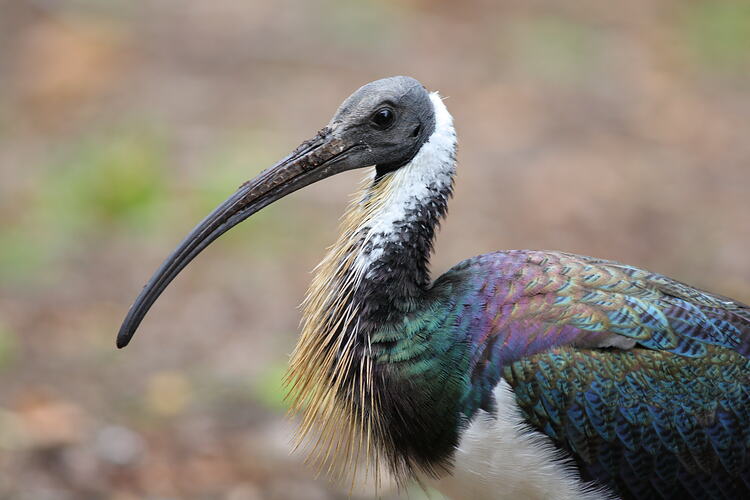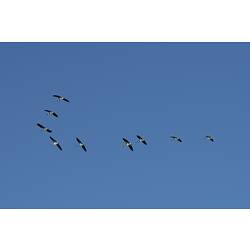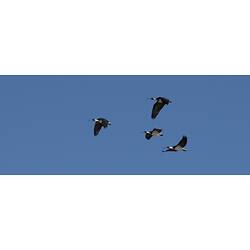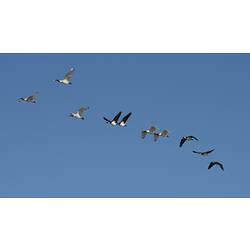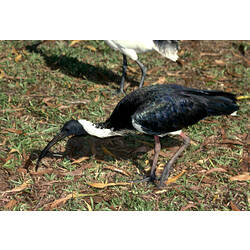General Description
Upper body metallic dark green-purple with white underparts. Back of neck (nape) white. Head black and bare. Yellow straw-like feathers hanging from the neck under a long, curved bill. Legs red. Young birds lack the straw-like plume and have black legs. Adult body up to 70 cm long. Flocks form distinctive 'V' formations when flying.
Biology
Straw-necked Ibis are highly nomadic, moving between areas alone or in groups in search of suitable habitat. They breed in large, often mixed-species colonies. Large areas of reeds, sticks and rushes are trampled into a platform over water where they build a large cup-shaped nest. They re-use the nest each year. Both sexes help build the nest and care for the chicks. They feed in shallow water, probing their bill into the mud or catching prey at the surface. They also feed on the ground. They eat insects, aquatic snails, small frogs and lizards. Ibis are typically seen perching on high branches in bare trees. They fly with their neck and head outstretched.
Distribution
Eastern, northern and western mainland Australia and Tasmania. Winter migrant to New Guinea and Indonesia.
Habitat
Pastures, croplands, grasslands, freshwater wetlands, swamp edges and some urban parks.
More Information
-
Animal Type
-
Animal SubType
-
Brief Id
A large waterbird with distinctive straw-like neck feathers, a long curved bill and iridescent black feathers.
-
Colours
Green, White
-
Maximum Size
76 cm
-
Habitats
-
Diet
Carnivore
-
Diet Categories
Invertebrates, Insects
-
Endemicity
-
Commercial
No
-
Conservation Statuses
CITES: Not listed, FFG Threatened List: Not listed, EPBC Act 1999: Not listed, IUCN Red List: Least Concern
-
Taxon Name
-
Common Name
Straw-necked Ibis
-
Kingdom
-
Phylum
-
Subphylum
-
Class
-
Order
-
Family
-
Genus
-
Species Name
spinicollis
